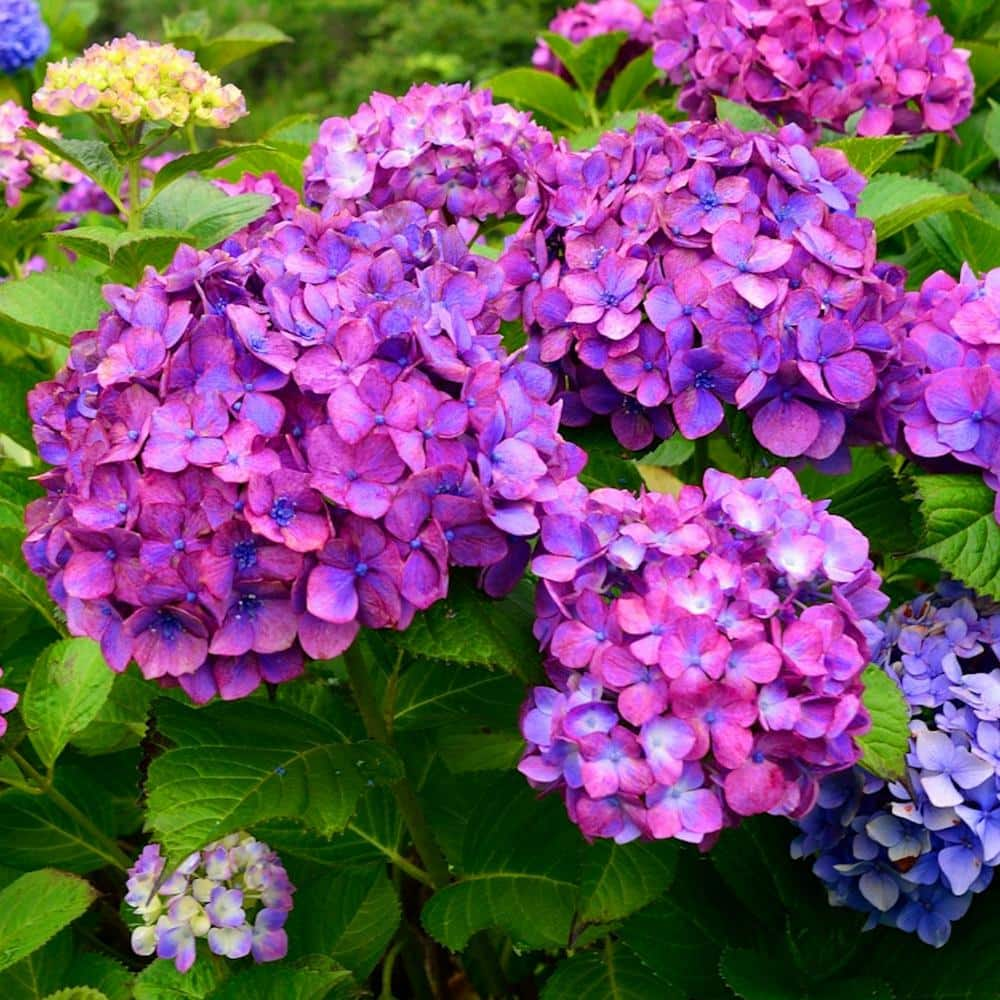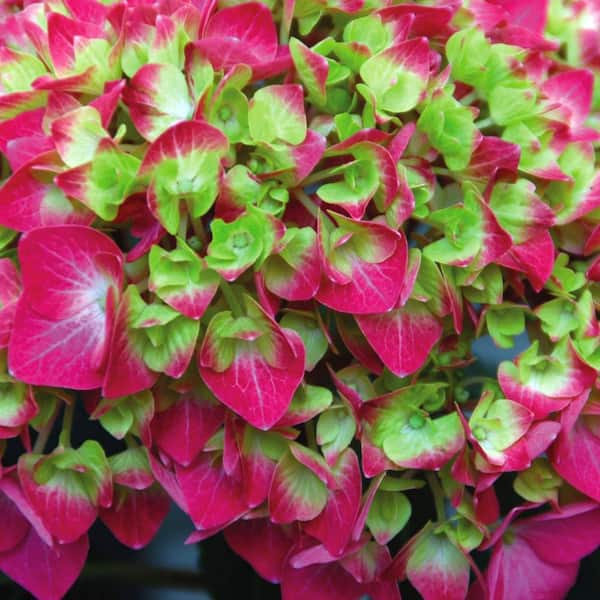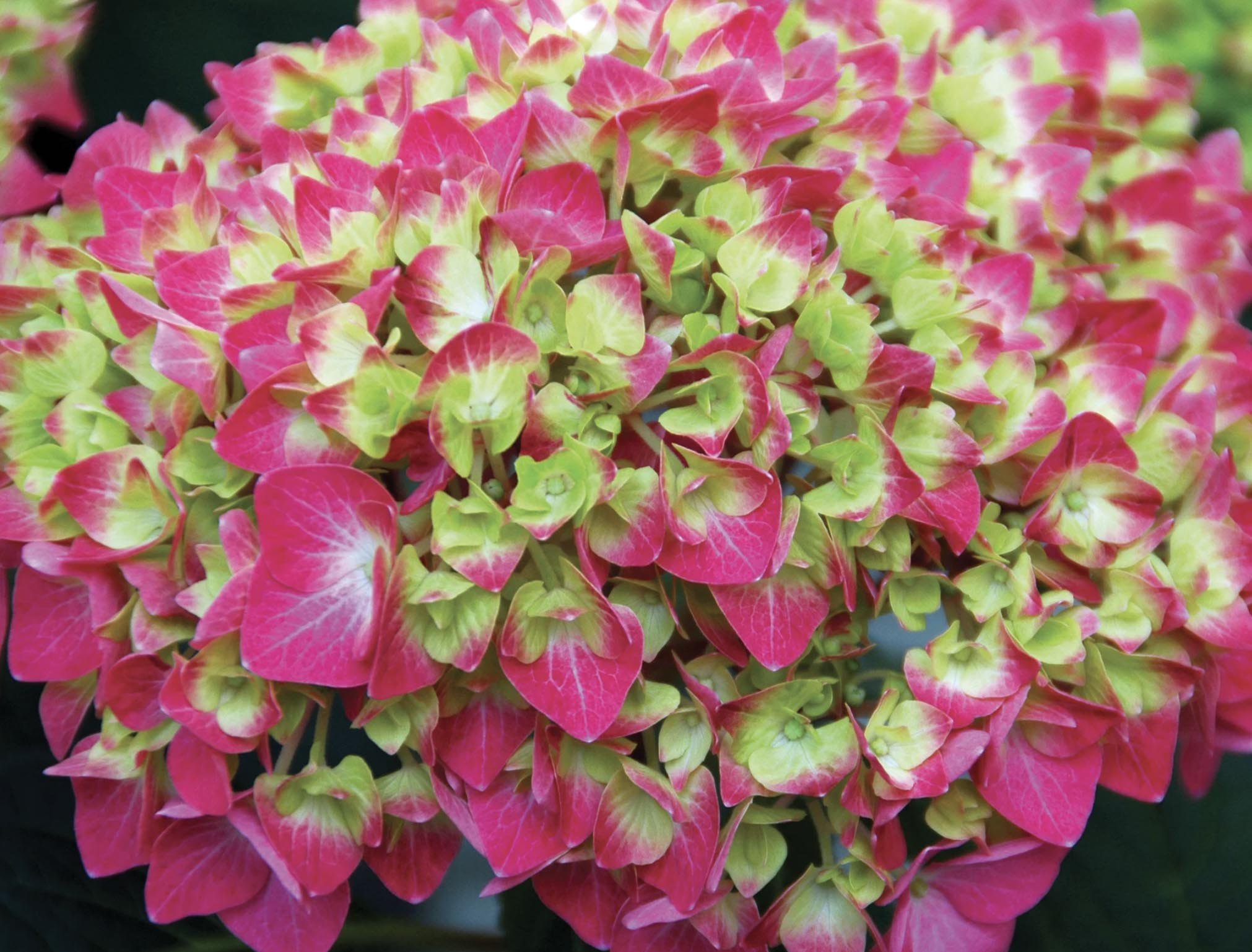Lime Lovebird Hydrangeas: The Showstopping Shrub That Will Brighten Up Your Garden
Lime Lovebird hydrangeas are a showstopping shrub that will brighten up any garden. With their large, multi-colored blooms that change from lime green to hot pink to blue, Lime Lovebirds are sure to turn heads. They are also relatively easy to care for, making them a great choice for even beginner gardeners.
In this blog post, we will discuss everything you need to know about Lime Lovebird hydrangeas, including their history, appearance, care requirements, and more. We will also provide tips on how to choose the right Lime Lovebird for your garden and how to get the most out of your plant.
So whether you are a seasoned gardener or just starting out, read on to learn more about this amazing shrub!
## History of Lime Lovebird Hydrangeas
Lime Lovebird hydrangeas were first introduced in 2013 by Proven Winners, a leading plant breeder. They are a hybrid of two other hydrangeas, Hydrangea macrophylla 'Nikko Blue' and Hydrangea macrophylla 'Limelight'. The result is a plant with the best of both worlds: the large, mophead blooms of 'Nikko Blue' and the vibrant lime green color of 'Limelight'.
## Appearance of Lime Lovebird Hydrangeas
Lime Lovebird hydrangeas are medium-sized shrubs that typically grow 3-4 feet tall and wide. They have large, mophead blooms that can reach up to 6 inches in diameter. The blooms start out lime green in the spring and summer, then gradually turn hot pink in the fall. In some cases, the blooms may even turn blue if the soil is acidic enough.
## Care Requirements of Lime Lovebird Hydrangeas
Lime Lovebird hydrangeas are relatively easy to care for. They prefer full sun to partial shade and well-drained soil. They are also relatively drought tolerant, but they will appreciate a deep watering once a week during the summer months.
To help your Lime Lovebird hydrangeas bloom their best, fertilize them in the spring with a balanced fertilizer. You can also prune them in the spring to remove any dead or damaged branches.
## Choosing the Right Lime Lovebird for Your Garden
When choosing a Lime Lovebird hydrangea for your garden, there are a few things to keep in mind. First, consider the size of your garden. Lime Lovebird hydrangeas can grow quite large, so if you have a small garden, you may want to choose a smaller variety.
Second, think about the amount of sunlight your garden gets. Lime Lovebird hydrangeas prefer full sun to partial shade, so if your garden gets a lot of sun, you will need to choose a variety that can tolerate it.
Finally, consider the color of your Lime Lovebird hydrangeas. If you want a plant with bright pink blooms, you will need to choose a variety that blooms in acidic soil. If you want a plant with blue blooms, you will need to choose a variety that blooms in alkaline soil.
## Getting the Most Out of Your Lime Lovebird Hydrangea
To get the most out of your Lime Lovebird hydrangea, follow these tips:
- Plant it in full sun to partial shade.
- Water it deeply once a week during the summer months.
- Fertilize it in the spring with a balanced fertilizer.
- Prune it in the spring to remove any dead or damaged branches.
- If you want blue blooms, plant your Lime Lovebird hydrangea in alkaline soil.
- If you want pink blooms, plant your Lime Lovebird hydrangea in acidic soil.
With proper care, your Lime Lovebird hydrangea will be a showstopping addition to your garden for years to come!
If you're looking for a hydrangea with a truly unique color palette, then the Lime Lovebird is the perfect choice for you. This stunning shrub produces large, multi-colored blossoms that start out lime green and gradually fade to hot pink before ending with a beautiful shade of blue. The color change is truly mesmerizing, and it makes the Lime Lovebird a real showstopper in any garden.
In addition to its beautiful blooms, the Lime Lovebird is also a very hardy plant. It is tolerant of a wide range of conditions, including partial sun to full sun and moist, well-drained soil. The Lime Lovebird is also a rebloomer, which means it will produce flowers from summer to fall.
If you're interested in learning more about the Lime Lovebird, I encourage you to visit . This website has a wealth of information about this amazing plant, including its care requirements, growing conditions, and more.
FAQ of lime lovebird hydrangea
Question 1: What is lime lovebird hydrangea?
Answer: Lime lovebird hydrangea is a deciduous shrub that is native to Japan. It is known for its lime green flowers that bloom in the summer. Lime lovebird hydrangeas can grow up to 6 feet tall and wide. They are relatively easy to care for and can tolerate a variety of soil conditions.
Question 2: What is the life cycle of lime lovebird hydrangea?
Answer: Lime lovebird hydrangeas are long-lived shrubs, sometimes living for up to 50 years if properly cared for. They typically grow new leaves in the spring, followed by flowers in the summer. The flowers will eventually fade and fall off, but the leaves will remain on the plant until fall. In the fall, the leaves will turn a beautiful shade of red or orange before falling off.
Question 3: How do I care for lime lovebird hydrangea?
Answer: Lime lovebird hydrangeas are relatively easy to care for. They prefer full sun to partial shade and well-drained soil. They should be watered regularly, especially during the hot summer months. Lime lovebird hydrangeas do not require a lot of fertilizer, but they can benefit from a light application of fertilizer in the spring.
Question 4: How do I propagate lime lovebird hydrangea?
Answer: Lime lovebird hydrangeas can be propagated by cuttings or division. To propagate by cuttings, take cuttings from healthy, mature stems in the spring or summer. The cuttings should be about 4 inches long and should have at least two sets of leaves. Dip the cuttings in rooting hormone and plant them in a well-draining potting mix. Keep the potting mix moist and place the cuttings in a warm, sunny location. The cuttings should root in about 4-6 weeks.
Question 5: What are some common pests and diseases of lime lovebird hydrangea?
Answer: Lime lovebird hydrangeas are susceptible to a few pests and diseases, including aphids, scale, and powdery mildew. Aphids can be controlled with insecticidal soap or neem oil. Scale can be controlled with horticultural oil. Powdery mildew can be controlled by watering the plant regularly and avoiding overhead watering.
Image of lime lovebird hydrangea
Here are 5 different images of "lime lovebird hydrangea" from Pinterest:




Post a Comment for "Lime Lovebird Hydrangeas: The Showstopping Shrub That Will Brighten Up Your Garden"